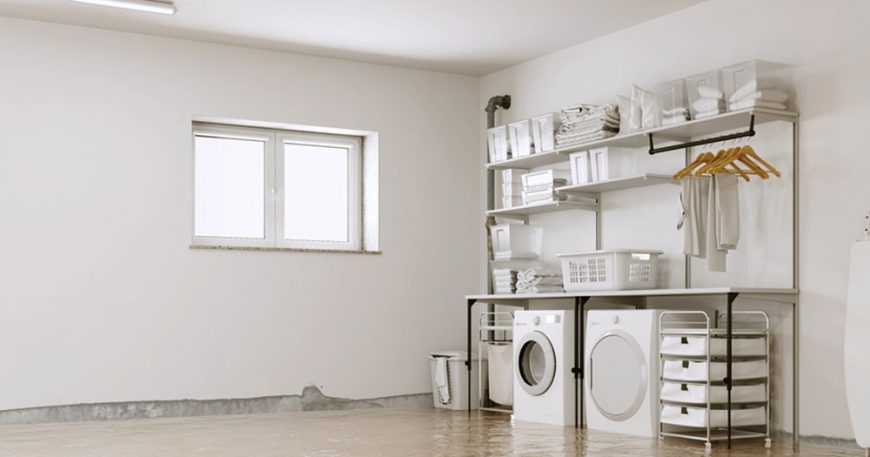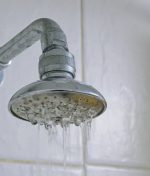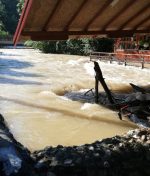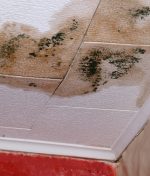What Are the Best Ways to Prevent Flooding in Your Basement?

- May 18, 2025
- byadmin
- Mold Remediation
Basement flooding can feel like a nightmare. Whether it’s from heavy rains, broken pipes, or groundwater seepage, the damage can be expensive, disruptive, and emotionally exhausting. At RAMM Water Restoration, we’ve helped countless San Diego homeowners recover from flooded basements—and in many cases, we’ve heard the same regret: “I wish I had taken steps to prevent this.”
The good news is that you can prevent basement flooding. With the right strategies and regular maintenance, you can protect your home and avoid the financial and emotional stress of water damage. In this blog, we’ll walk you through the best ways to reduce the risk of flooding in your basement, based on years of experience in flood damage restoration and prevention.
Here’s how regular inspections can help prevent mold, flood, and fire damage:
1. Install and Maintain a Sump Pump
A sump pump is one of the most effective tools for basement flood prevention. It sits in a pit (or “sump”) and automatically pumps water out of your basement and away from your home when water levels rise.
Here’s what to keep in mind:
- Choose a pump with a battery backup, so it works during power outages.
- Test your sump pump every few months, especially before rainy seasons.
- Clean the pit and check for debris that could block the float switch.
2. Improve Your Yard’s Drainage
Poor drainage around your foundation is a leading cause of basement flooding. If rainwater pools near your home instead of flowing away, it can seep through cracks or pressure your foundation walls.
Simple upgrades to your landscaping can make a huge difference:
- Grade your yard to slope away from your house.
- Extend downspouts at least 6–10 feet from the foundation.
- Install French drains or surface drains to direct water away.
- Use gravel or rain gardens to absorb runoff and reduce pooling.
3. Seal Basement Walls and Cracks
Water can find its way into your basement through the smallest cracks in walls, floors, or window wells. Over time, wear and settling can create entry points for moisture and groundwater.
Waterproofing your basement should include:
- Sealing visible cracks with hydraulic cement or epoxy injection.
- Applying waterproof coatings or membranes to basement walls.
- Installing window well covers to prevent rain from pooling around windows.
4. Keep Gutters and Downspouts Clean
Your gutters play a huge role in flood prevention by directing water away from your roof and foundation. When clogged, they overflow and dump water directly around your home’s perimeter—exactly where you don’t want it.
Tips to maintain your gutters:
- Clean them at least twice a year, or more if you have overhanging trees.
- Check for sagging or broken sections that could leak.
- Make sure downspouts are securely connected and properly extended.
5. Check for Plumbing Leaks and Backup Risks
Not all basement flooding comes from the outside. Sometimes the problem starts with a burst pipe, water heater failure, or a clogged sewer line. That’s why it’s critical to keep your home’s internal systems in check.
Preventive measures include:
- Inspecting exposed pipes for signs of corrosion or wear.
- Replacing aging water heaters and appliances before they fail.
- Installing a backwater valve to prevent sewage from backing up into your basement.
- Never pouring grease or debris down drains.
6. Install Basement Flood Sensors or Alarms
Technology can now help alert you the moment water begins to enter your basement. Flood sensors placed near sump pumps, water heaters, or basement corners can send instant alerts to your phone, giving you a head start before damage gets out of hand.
These devices are relatively affordable and easy to install, offering an extra layer of protection and peace of mind.
7. Regular Inspections and Maintenance
Sometimes, the best prevention is simply staying proactive. Set a seasonal routine to inspect your basement, test your sump pump, walk your property after storms, and look for new cracks or leaks.
At RAMM Water Restoration, we believe in catching small problems before they turn into major damage. That’s why we offer moisture detection, inspection services, and expert advice to help you stay one step ahead of disaster.
How We Can Help
At RAMM Water Restoration, we know that a flooded basement is more than just a mess—it’s a disruption to your life, your routine, and your sense of security. That’s why we focus on prevention as much as restoration. Our San Diego-based team combines technical expertise with genuine compassion. We’re here to listen, guide, and support you through every step—before, during, and after a crisis.
Whether you need emergency response, mold remediation, or advice on how to flood-proof your basement, we’re just a call away. Let RAMM Water Restoration help you protect your home and restore your peace of mind—because when water strikes, kindness and expertise should rise with it.
Categories
Recent Posts
How Hard Water Issues Can Lead to Plumbing Leaks in San Diego Homes
December 12, 2025
Understanding the Difference Between Flood Damage and Water Damage
December 12, 2025
How to Spot Water Damage in Ceilings Before It Gets Worse
December 12, 2025









